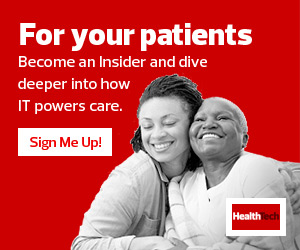Once Polikaitis’ team completed its foray into IT workflow optimization, the group started thinking about other corners of UI Health that could benefit. Among them: human resources, patient financial services and enterprise education.
“You start thinking, ‘Where are all the places in the organization where somebody puts in a request for something and then someone else provides a response?’” Polikaitis says, noting that teams across the health system now use the ServiceNow platform in some capacity. “We’re far better as an organization because of it.”
A similar success story has unfolded at CHRISTUS Health, which for several years has relied on ServiceNow to support IT management and human resources across more than 60 hospitals in Texas, Louisiana and New Mexico.
“It’s been a huge help for us when it comes to things like tracking equipment we’ve put to use,” says Lynn Gibson, vice president and CTO for the Irving, Texas-based organization. “But it’s also been a helpful tool for our employees when they need support themselves.”
Using the Platform for Crisis Management
In 2017, the platform proved critical when communities served by CHRISTUS Health were slammed by Hurricane Harvey. Many employees required assistance after the storm, which caused extensive property damage across the region.
Within 24 hours, the organization added electronic forms to its ServiceNow HR Service Delivery portal so employees could donate money to colleagues in need. “It was the same thing this year with Hurricane Laura,” Gibson says.
DISCOVER: Learn how CHRISTUS Health simplified its data center with hyperconvergence.
The platform, meanwhile, is there to augment everyday HR processes — the organization has dubbed it My CHRISTUS Life — but during an emergency scenario like a hurricane or COVID-19, it becomes a resource hub.
In the end, Gibson says, digital workflow platforms such as ServiceNow are meant to drive improvements in patient care. By facilitating processes and breaking down silos, they help healthcare organizations and the departments within them serve customers’ needs.
The circumstances needn’t be large: CHRISTUS Health clinicians deploy the system to automatically populate service request forms to get help faster when a device isn’t working properly.
“It’s nothing glamorous, just nuts-and-bolts efficiency,” Gibson says. “It’s something we depend on every day.”











